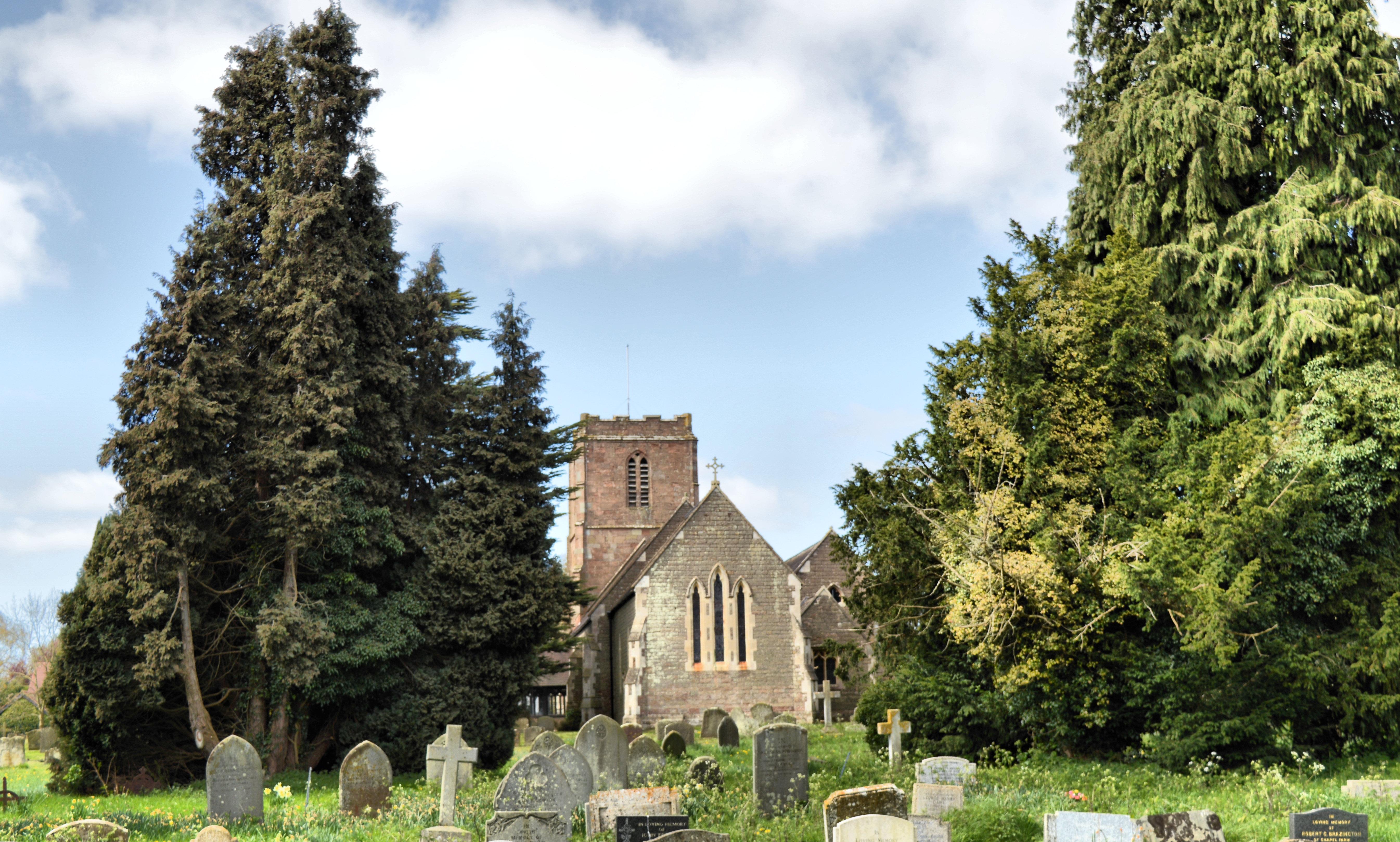St Mary
Bromsberrow, Gloucestershire

The medieval tower is a prominent feature in a peaceful, rural area close to the Malvern Hills with fine views to the Cotswold Hills.
Redmarley D'Abitot, Gloucestershire
Centrally situated in this quiet Gloucestershire Village, St Bartholomew's has a remarkable history to share.
The building is the fourth to be built on this site, although a church has been here since around 1190AD, as mentioned in the Domesday Book. In the early 19th century the building had become largely derelict and it was necessary to demolish the tower and steeple, with the exception of the medieval base, and rebuild the structure in 1738. The two naves, chancel and vestry was rebuilt in 1855 by Francis Niblett and at this stage a porch was gifted by the Earl Beauchamp, whose coat of arms is above the door.
A fine three lancet east window is dated 1856 and is an early example of work by Heaton and Butler. It is complemented by the west window of the north aisle also by Heaton and Butler, dated 1864 and features St. Bartholomew. A memorial window on the south side of the chancel is a fine example of the work of Charles Eamer Kempe.
The area became a battlefield for a civil war encounter during the siege of Gloucester. The base of the tower bears the grooves where arrows were sharpened before the battle of Redmarley in 1644. There is an entry in the old register of the burial of some of the fallen after the battle.
The oldest of many wall monuments is a brass plaque on the chancel wall and dated 1609. Other wall memorials date mainly from the late 18th and early 19th century. Among these is one to Sir Henry Gee Roberts KCB (1800-1860) who served as a Major General and later became the British Raj in India. As a note of interest Sir Henry was the father of Alice who married Edward Elgar. They lived at Hazeldine House, Redmarley. Two pictures hang in the Lady Chapel given by Barbara Cartland nee Scobell in memory of her mother. The family lived in the Down House during 1880s. A listed monument can be seen in the churchyard, the monument inscribed to Elizabeth Stephens who died in 1820.
The churchyard is filled with natural wild daffodil, narcissus pseudonarcissus.
Bromsberrow, Gloucestershire
Corse, Gloucestershire
Newent, Gloucestershire
The churchyard site was an ancient burial ground going back to Anglo Saxon times, a buried Celtic cross, dating back to approximately 750AD, now sits proudly in the entrance porch.